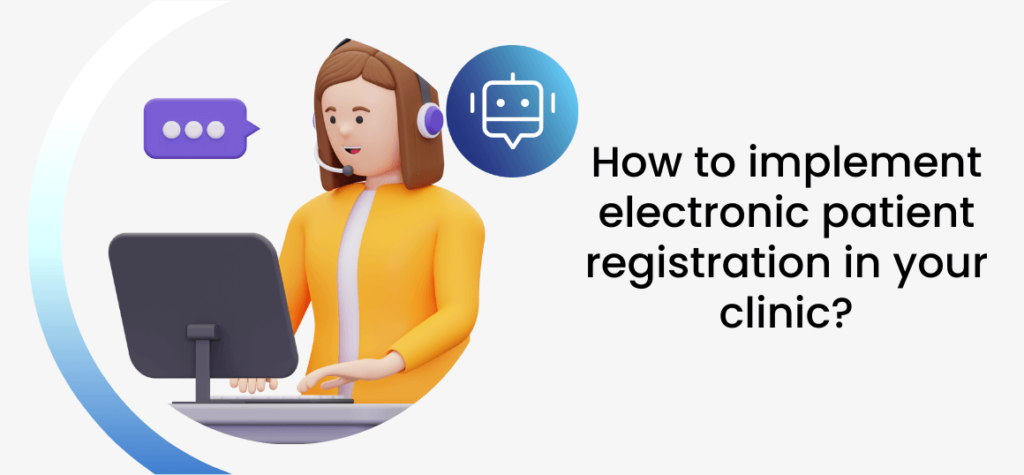How to transition to electronic patient registration? An action plan for clinics
Year after year, the number of medical facilities in Poland adopting electronic patient registration systems continues to grow. This automated system streamlines the operations of medical clinics, enhancing not only patient satisfaction with the services provided but also optimizing the costs of running the practice. In this article, you’ll learn how the system works and how a clinic can prepare for the implementation of online patient registration.
How does technological advancement impact the medical sector in Poland?
The medical sector in Poland is increasingly leveraging the potential of modern technologies. While Polish law does not mandate medical facilities to use electronic medical records or online appointment booking systems, many institutions choose to implement these solutions independently. Properly selected and functional software significantly improves the convenience and efficiency of staff operations. On the other hand, patients can schedule appointments with specialists more easily, saving both time and stress. Modern medical technology is no longer limited to patient registration software for clinics. It also encompasses telemedicine solutions for remote consultations. Each implementation of such systems should be carefully analyzed, ensuring that the programs used meet the highest standards of security, reliability, and data protection.
Electronic patient registration in medical facilities – key benefits
Electronic patient registration systems often leverage medical voicebots, specialized programs powered by artificial intelligence and speech recognition technology. Today, clinic management software can cover several aspects of patient care. Key functionalities include:
- scheduling appointments;
- confirming appointments;
- sending automated reminders about upcoming visits;
- rescheduling appointments;
- updating personal information;
- and more.
The exact range of functionalities is tailored to the specific needs of the medical facility. Proper integration of the software with specialists’ calendars minimizes the risk of overlapping appointments. Notifications about upcoming appointments reduce the number of “no-shows,” where patients fail to attend and block available time slots.
Automation of the communication process
Automating the registration process allows clinic staff to focus on assisting patients in-person and managing other essential tasks. This increases their daily efficiency and reduces potential errors. Additionally, staff can access an up-to-date calendar reflecting the latest online patient bookings at any time. Appointment scheduling software can send confirmations for booked visits, ensuring patients don’t miss their appointments. This translates to an even higher standard of medical services offered, improving both patient satisfaction and operational efficiency.
Functional medical hotline
A conversational bot can also serve as a medical hotline, providing patients with access to test results, verifying patient identities, or updating their information in the database. To further enhance the efficiency and profitability of a healthcare facility, two-way SMS notifications can be implemented, enabling interactive communication. This type of implementation has been successfully carried out at Omega Medical Clinics in Bydgoszcz.
Broad application potential
The software for confirming and scheduling appointments can be implemented in various types of medical practices, covering both primary care and specialized medical services. When properly deployed, it enhances the convenience for both staff and patients. Currently, virtual assistants are successfully used in fields such as dentistry, orthopedics, psychiatry, dermatology, and rehabilitation clinics. AI-powered voicebots ensure continuous patient service while maintaining the highest communication standards. They don’t experience “off days,” positively impacting the facility’s reputation and patient satisfaction levels.
How to prepare for implementing software in your clinic?
Are you considering introducing an electronic patient registration system in your medical facility? It’s essential to understand how to prepare for the implementation process. To avoid mistakes, consider seeking support from experts and selecting software from a reputable provider.
Defining your needs and integrating with existing systems
The first step is to clearly define your needs, and our expert can help with that. At EasyCall, we begin by understanding the specifics of your medical facility and propose a tailored implementation plan. We will carefully assess which functionalities are critical for your operations and how they can improve the profitability of your business. A key aspect of the implementation is the system your clinic currently uses for management. EasyCall experts will ensure seamless integration of your existing system with our Medical Voicebot.
Ensuring a reliable internet connection
As a clinic manager, you need to assess the quality of your facility’s Internet connection. It’s crucial to have a connection with good bandwidth to enable the smooth operation of the software and provide patients with a seamless experience. A reliable Internet connection also minimizes the risk of software errors, ensuring uninterrupted service.
Setting communication pathways
One of the key steps in implementing software is configuring the communication pathways that the virtual voice assistant will use to guide patients through processes like registration, appointment rescheduling, or data updates. We provide you with a dedicated form to streamline the preparation of these pathways. Our team specializes in software implementations, tailoring solutions to specific medical specializations and clinic types.
In recent months, we successfully implemented patient registration systems at Omega Medical Clinics in Bydgoszcz and Gizińscy Medical Center. Are you looking for a solution to enhance the profitability and efficiency of your medical facility? We invite you to contact our expert. We will thoroughly assess your needs and prepare a customized implementation plan tailored to your clinic.

